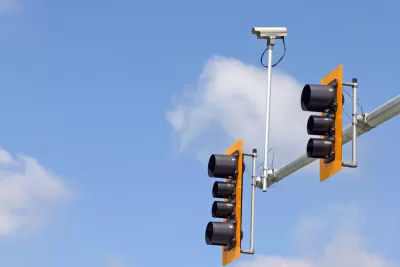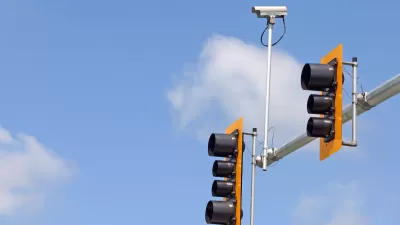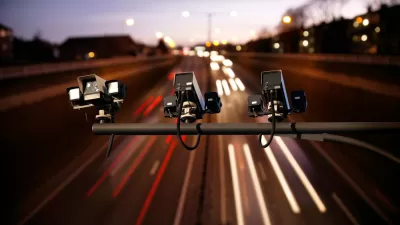Although controversial in the United States, when deployed thoughtfully, automated enforcement can save lives and make roads safer for all users.

A new study assesses attitudes toward automated traffic enforcement and makes recommendations for using traffic cameras to make streets safer and more equitable. As Kea Wilson explains in Streetsblog, the researchers looked at how people perceive traffic cameras and how messaging can alter their views.
In the study, 60 percent of respondents believed that automated enforcement is “mostly about raising revenue,” reinforcing the belief that traffic cameras serve as a cash grab for cities. Yet “Despite evidence that traffic enforcement in general is being used to line city coffers, automated enforcement specifically isn’t a very good cash cow — because local motorists quickly warn each other of the location of new stationary cameras and drive more carefully when they’re nearby.”
This leads to the first recommendation: using good messaging to clarify the role of traffic cameras and debunk myths. Other recommendations include careful camera placement that doesn’t feel like a ‘gotcha,’ but rather uses data to place cameras in areas known to be unsafe; setting appropriate fines to ensure the program doesn’t perpetuate inequity; and spending the revenue on “self-enforcing streets,” which the authors define as infrastructure that makes it difficult to speed, for example.
On how not to spend speed camera revenue, the authors point to “extractive contracts with private firms that take home a hefty percentage of fines and sometimes a bonus per violation, creating an incentive to keep the dangerous drivers rolling in a way that charging cities a flat fee doesn’t.”
FULL STORY: Four Ways To Build A Better Automated Enforcement Program

Manufactured Crisis: Losing the Nation’s Largest Source of Unsubsidized Affordable Housing
Manufactured housing communities have long been an affordable housing option for millions of people living in the U.S., but that affordability is disappearing rapidly. How did we get here?

Americans May Be Stuck — But Why?
Americans are moving a lot less than they once did, and that is a problem. While Yoni Applebaum, in his highly-publicized article Stuck, gets the reasons badly wrong, it's still important to ask: why are we moving so much less than before?

Using Old Oil and Gas Wells for Green Energy Storage
Penn State researchers have found that repurposing abandoned oil and gas wells for geothermal-assisted compressed-air energy storage can boost efficiency, reduce environmental risks, and support clean energy and job transitions.

Updating LA’s Tree Rules Could Bring More Shade to Underserved Neighborhoods
A new USC study finds that relaxing Los Angeles’ outdated tree planting guidelines could significantly expand urban tree canopy and reduce shade disparities in lower-income neighborhoods, though infrastructure investments are also needed.

California's Canal Solar Projects Aim to Conserve Resources and Expand Clean Energy
California’s Project Nexus has begun generating electricity from solar panels installed over irrigation canals, with researchers and state agencies exploring statewide expansion to conserve water and boost clean energy production.

HHS Staff Cuts Gut Energy Assistance Program
The full staff of a federal program that distributes heating and cooling assistance for low-income families was laid off, jeopardizing the program’s operations.
Urban Design for Planners 1: Software Tools
This six-course series explores essential urban design concepts using open source software and equips planners with the tools they need to participate fully in the urban design process.
Planning for Universal Design
Learn the tools for implementing Universal Design in planning regulations.
Heyer Gruel & Associates PA
City of Moreno Valley
Institute for Housing and Urban Development Studies (IHS)
City of Grandview
Harvard GSD Executive Education
Salt Lake City
NYU Wagner Graduate School of Public Service
City of Cambridge, Maryland





























